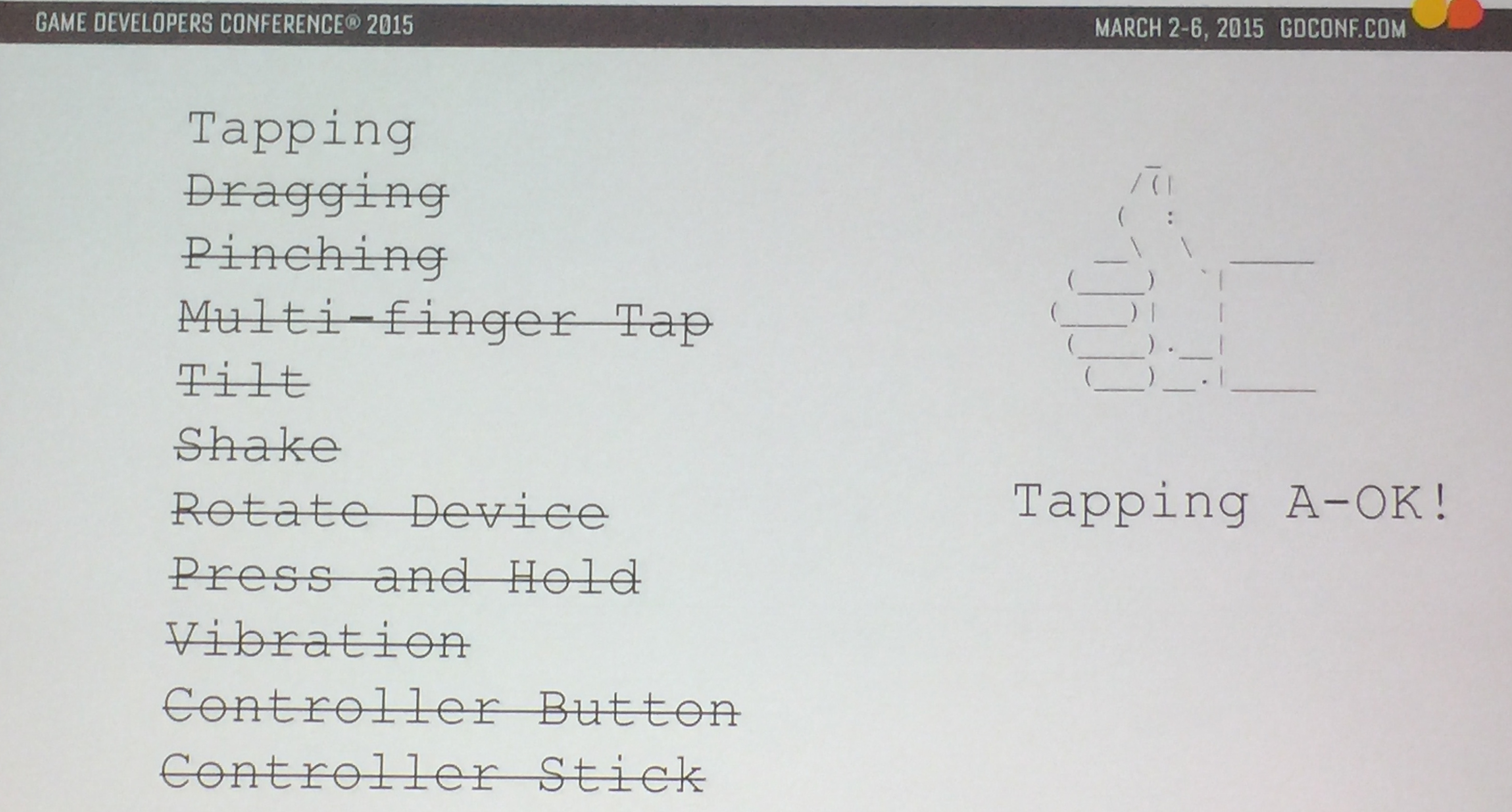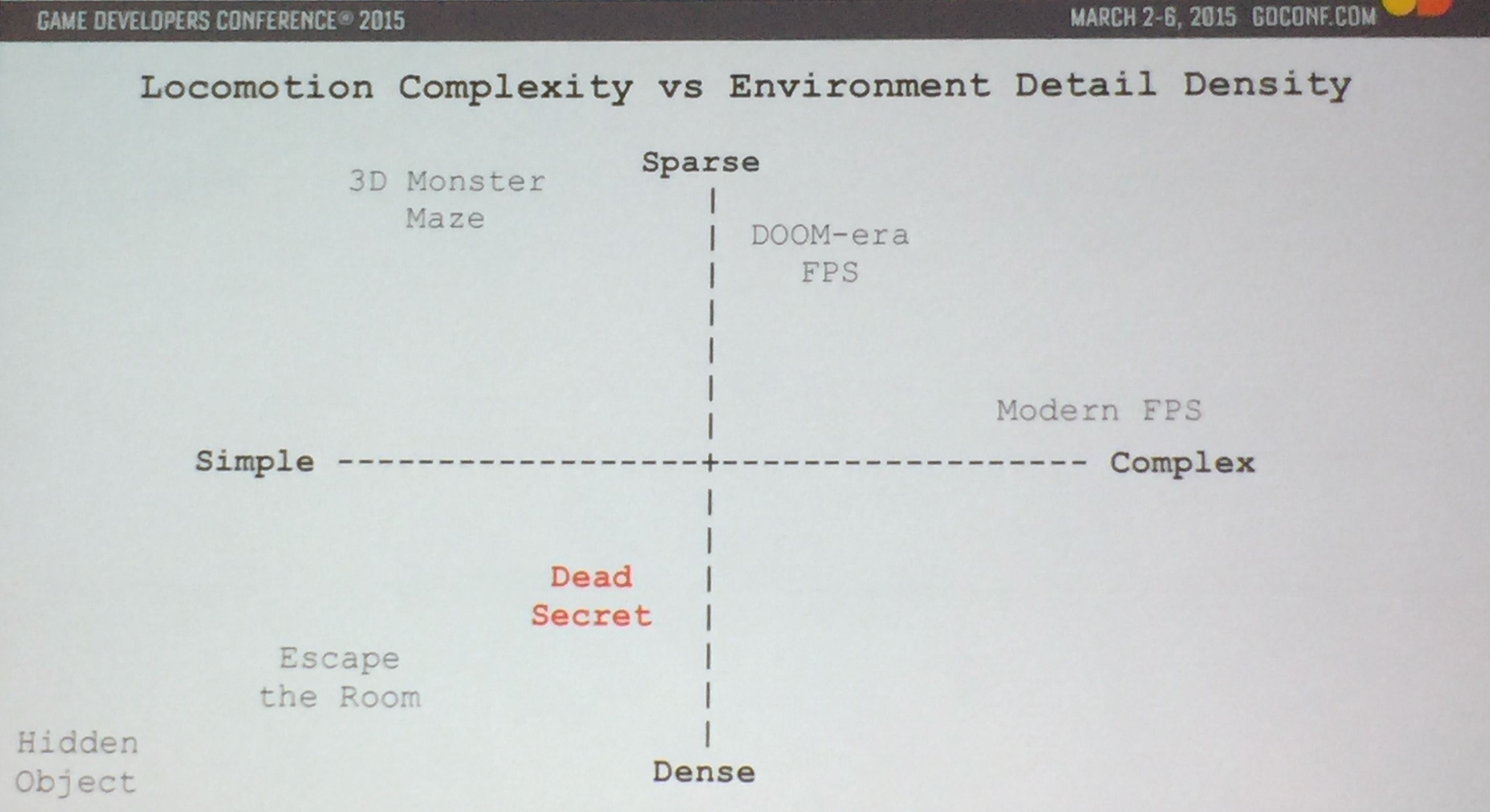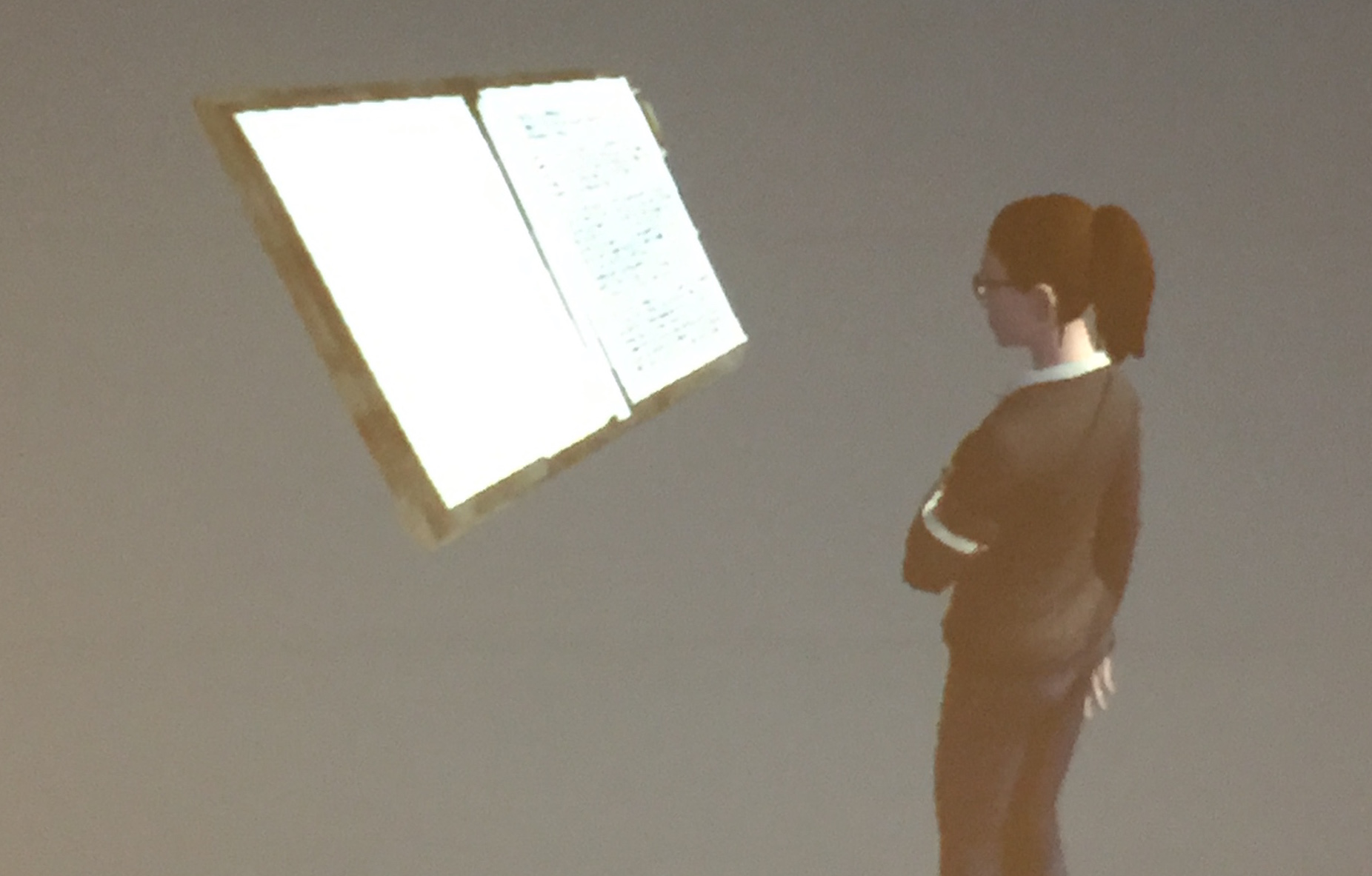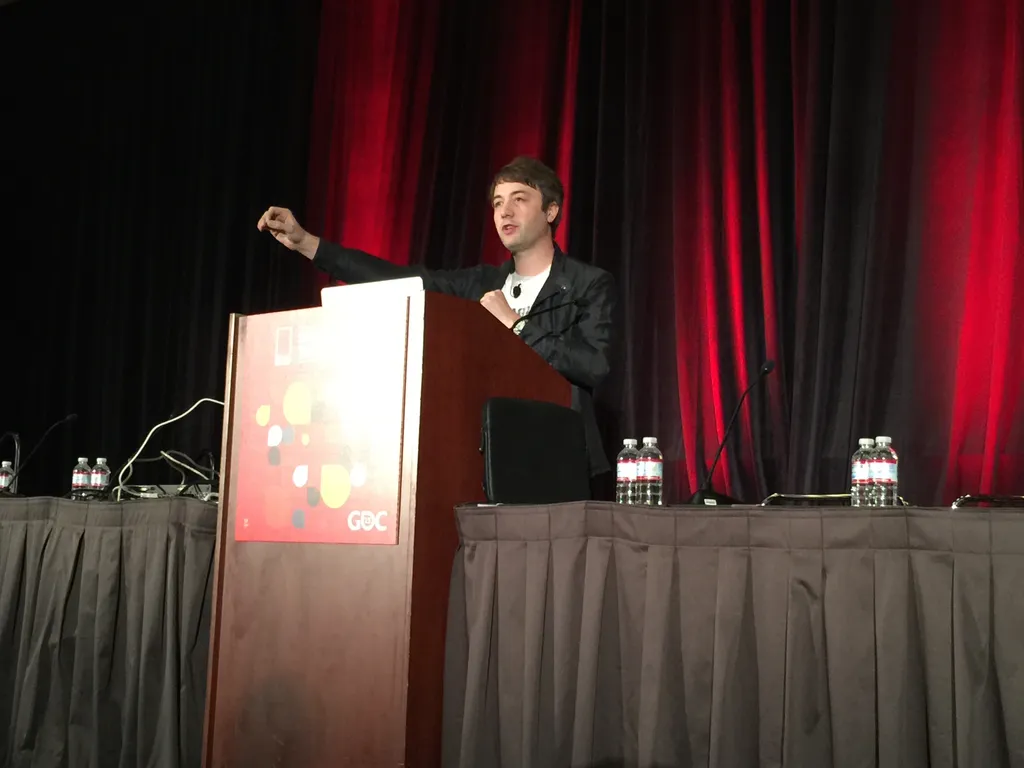Developing for mobile VR comes with a set of unique design challenges. Today at GDC, Chris Pruett (Co-founder at Robot Invader and Developer Relations at Oculus VR) shared his learning’s from designing for mobile VR in Dead Secret.
When it comes to designing VR-centric gameplay systems poorly implemented designs often result in the player feeling sick. So when Robot Invader decided to rebuild its “Dead Secret” project as a mobile VR game they needed to go back to the drawing board and rewrite all the user interaction and UI code as well as change the level design, puzzles, and story. The side effects of this change were massive.
“The thing about VR is your expectations are probably wrong”
The first hurdle was simplifying the input options. What worked to navigate on a tablet no longer made sense. It is not comfortable to drag and pinch in VR like it is on a tablet. Pruett and his team didn’t want you to have to lug around a Bluetooth controller to play the game so they reworked the navigation entirely, turning your head into the controller. They created a gaze cursor to look, and then all taps, pinches, and drags were simplified to taps. Simplified interactions lead to the second hurdle – The Puzzles.
With these new controls the puzzles no longer made sense for VR, so they hit the drawing board again to rework the game design. What happened? Mechanical puzzles became more logic based puzzles. Rather then tapping two buttons at the same time you may have to search for certain items in the world then tap the buttons in the proper sequence to complete the puzzle. New items had to enter the world to accommodate for the changes in the puzzle, leading to a new hurdle, the room design.
In VR the rooms are packed with more content and there are also more places to be. You need to have higher environment complexity to accommodate the changes to the navigation and puzzles. For example, as a player progresses through a world they can find keys that unlock doors in areas already visited, and must eventually return to those areas to find more keys to unlock new areas of the structure. Thus the player travels through the map in a very non-linear fashion, moving back and forth between rooms as items are collected and puzzles are solved, and eventually passing into areas with entirely new rooms. The map opens itself up like a spiral shell. Chris calls this design Recursive Unlocking, and it works great for VR.
 One of the final hurdles was the text system. On a tablet text appeared as a subtitle over the environment. When testing this in VR they quickly realized it didn’t work. It made the user lose focus and it took too much effort for your brain to read the text. They suggest your text in VR stick to the world. Make the text integrate with things in the world. For Dead Secret they more then halved the word count and created a folio that housed the text. To make the text actually readable they needed to make the folio super big, about half the size of your body.
One of the final hurdles was the text system. On a tablet text appeared as a subtitle over the environment. When testing this in VR they quickly realized it didn’t work. It made the user lose focus and it took too much effort for your brain to read the text. They suggest your text in VR stick to the world. Make the text integrate with things in the world. For Dead Secret they more then halved the word count and created a folio that housed the text. To make the text actually readable they needed to make the folio super big, about half the size of your body.
After months of work, Dead Secret is not only playable on mobile VR platforms; it’s a much better game. Dead Secret is coming soon in 2015. You can sign up for updates on their website.


























